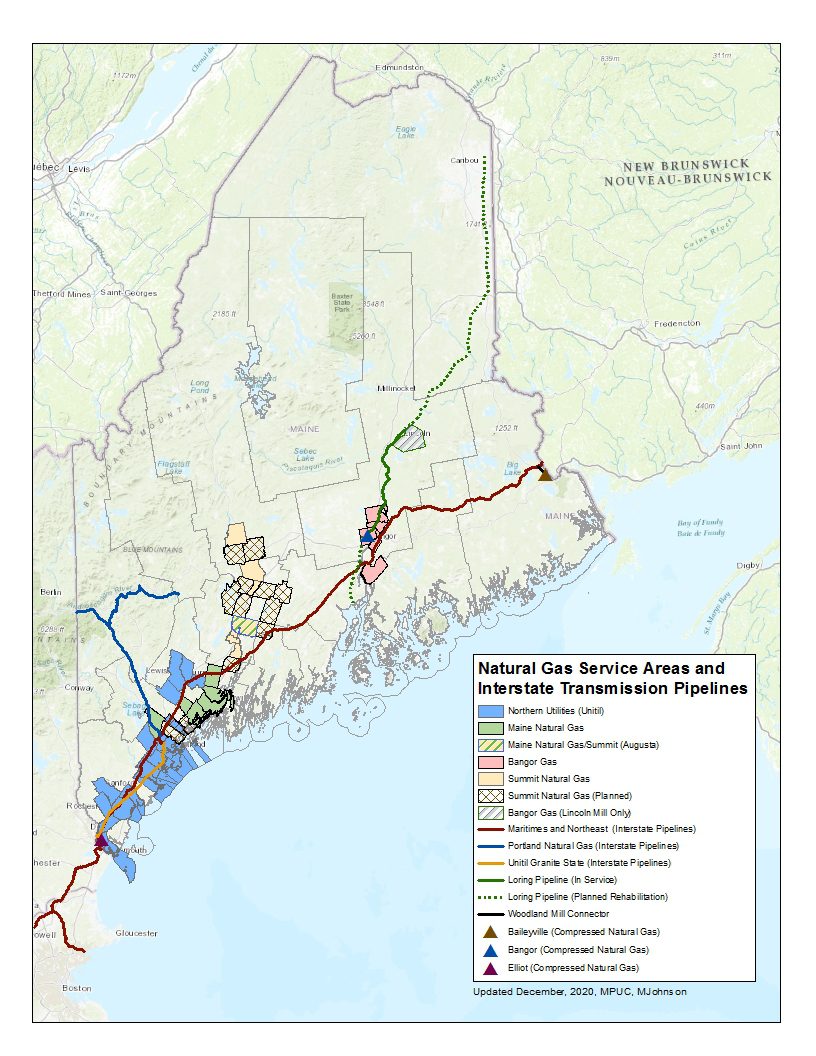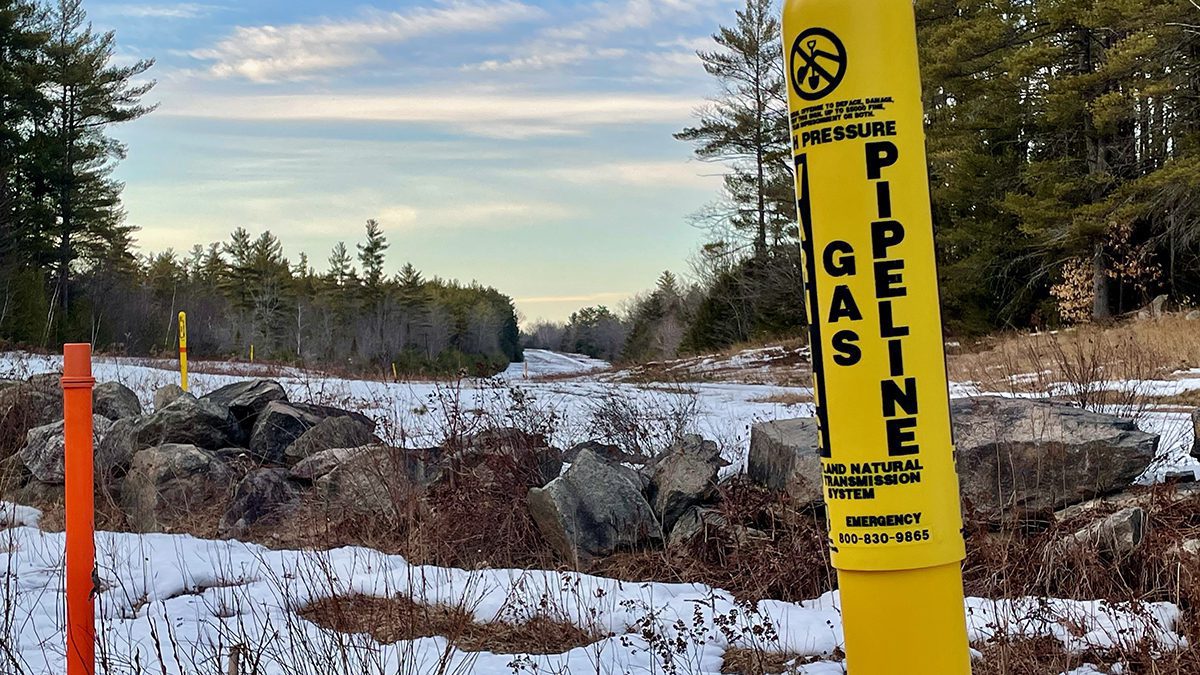Editor’s note: This is the first of two columns focused on phasing out fossil fuels in Maine.
Amid a torrent of public comments at a recent Rockland City Council meeting to discuss a proposed Midcoast natural gas pipeline, a teenager’s honest expression of bewilderment stood out: “I am surprised by this project.”
And well she might be. Why are we even discussing new fossil fuel infrastructure when scientists tell us that to forestall further climate catastrophes, the world has a decade to cut its carbon emissions nearly in half?
The heating, cooling and lighting of buildings generates 30 percent of Maine’s greenhouse gas emissions. The state’s new Climate Action Plan emphasizes electrifying buildings as the fastest detox from the fossil fuel systems that heat 80 percent of Maine households but exacerbate global warming.
Our collective challenge is to electrify heating systems as fast as possible with highly efficient air-source heat pumps (which also cool), using electricity from renewable power, battery storage and sound grid management.
To get there, we need to acknowledge and address the full cost of fossil fuels.
Don’t overlook untallied costs of a new pipeline
Less than one month after proposing to spend $90 million on a 28-mile pipeline between Belfast and Thomaston, Summit Natural Gas withdrew its plan earlier this week. That news came as a welcome surprise to many of the 150-plus Midcoast residents who participated in the council meeting and voiced strong objections to the project.
Rockland councilors that night began discussing legal options akin to what South Portland did in its “Clear Skies” ordinance to block a tar sands pipeline. Its ordinance passed in 2014 and a federal judge upheld it, but it’s still on appeal with a ruling not expected until summer.
Midcoast communities might have embarked on a similar rocky legal road. A recent NPR story documents how gas utilities around the nation are challenging ordinances that discourage new gas infrastructure and forming front groups to squelch local resistance.
Maine is fortunate that Summit Natural Gas chose not to engage in a protracted fight. If it had, the local gas distributor would have brought the resources of Summit Utilities, a privately held company operating in five states that is in turn wholly owned by Infrastructure Investments Fund, a $12.5 billion “private investment vehicle” affiliated with JP Morgan.

And Maine’s regulatory system sanctions fossil fuel expansion. Gas utilities are allowed to expand wherever there is no direct competition, and derive most of their profit from a regulated rate of return on infrastructure – so there’s strong incentive to expand. They are permitted to operate without billing customers for their product’s far-reaching societal costs, which include worsening climate disruptions, dangerous leaks and health threats.
Compared to heating oil, natural gas does produce roughly 27 percent fewer carbon dioxide emissions, but it is 85 to 95 percent methane, which is vastly more potent at global warming. Methane escapes at every point in the production and transport process – from fracking to pipelines – remaining in the atmosphere for a decade or more.
When gas leaks or explodes, small-town first responders face situations for which they are unprepared. More than 90 percent of Maine firefighters are volunteers, and with numbers dwindling, few departments have funds to cover the added training time or specialized equipment needed for natural gas emergencies.
A 2020 report from the nonprofit Rocky Mountain Institute notes that gas-burning appliances create a toxic mix of nitrous dioxide, carbon monoxide and other pollutants that often exceed indoor and even outdoor air standards, exacerbating respiratory problems, particularly in children.
Two-thirds of domestic natural gas production is now hydraulically fractured (fracked) gas that has devastating impacts on the health of communities where it occurs, as a new series reported by Environmental Health News demonstrates.
Until prices for natural gas and other fossil fuels reflect true costs, noted Steven Clemmer, director of energy research for the Union of Concerned Scientists’ Climate and Energy Program, “we are operating on an uneven playing field.” When those costs are considered, Clemmer added, “it seems like a no-brainer to avoid building new (gas) infrastructure.”
Don’t buy the bridge
Natural gas is often pitched as a “bridge” fuel easing the transition from oil to renewable power. But wind, solar and battery costs have plummeted in recent years to the point where they’re competitive with fossil fuels and, in many instances, less costly – particularly with new construction. Even with older homes that need weatherization before electrification, the crossover point at which electricity becomes cheaper than natural gas is measured in years, not decades.
Gas and oil prices – always volatile – can skyrocket in response to natural disasters, which are becoming more common as climate change accelerates. As people literally froze to death recently in Texas, Oklahoma wholesale gas prices rose 33,000 percent and one natural gas executive crowed about “hitting the jackpot.”
The U.S. Energy Information Administration projects that natural gas prices will rise – potentially significantly – and could spike (as they were slated to do this year, even before the recent extreme weather). As gas prices rise, more people will opt to electrify their heating systems, further shrinking the customer base for gas and driving prices still higher.
Meanwhile, electricity prices are expected to keep dropping steadily under almost every scenario. And the cost to power air-source heat pumps will likely drop as the National Renewable Energy Laboratory projects their efficiency will increase from an average of 300 percent in 2020 to between 440 and 530 percent by 2050.
Not surprisingly, investor interest in fossil fuels is declining. “The cost of borrowing money has flipped: whereas oil and gas used to have favorable lending rates, renewable energy project developers are now paying interest rates as low as 3 percent; oil and gas producers are paying as much as 20 percent for long-term loans to finance their ventures,” wrote journalist Jonathan Mingle.
“If we build out a huge infrastructure for gas now to continue to use it as the bridge fuel … we’re going to be stuck with stranded assets in 10, 20, 30 years,” observed John Kerry, special presidential envoy for climate. Those stranded assets could be inside Maine homes and businesses, leaving unsuspecting gas customers with heating systems too costly to run.
Don’t count on the cows
A sobering economic forecast has gas utilities scrambling to reinvent themselves as conveyors of renewable natural gas (RNG), which taps methane from landfills, wastewater treatment and manure for heating or transportation. It’s a worthy aspiration and can work on a small, localized scale, but RNG is costly to produce, limited in supply, and not well-aligned with federal incentives. And it is still primarily methane, with all the community hazards and climate threats that entails.
By the American Gas Foundation’s own calculations, RNG’s wholesale price before any markup is “triple the price (of fracked natural gas); it’s more expensive than oil,” noted Matt Rusteika, a senior policy analyst with the nonprofit Acadia Center. Due to high costs, he adds, no facilities anywhere in New England currently produce RNG for pipeline injection.
Summit Natural Gas, for example, has spent over two years planning a pilot project with five dairy farms around Clinton that it claims will produce – at some unspecified future time – “about 45 percent of the company’s Maine annual residential gas demand.” Most gas that Summit delivers today goes to industrial customers, Rusteika noted, so even if that project moves forward, it may not replace much fracked gas.
Don’t wait for the next pipeline proposal
At Rockland’s four-hour Council meeting, Midcoast residents learned that Maine has few checks on the expansion of natural gas infrastructure in the state – except for the outcry and organizing of local residents.
That needs to change if Maine is to successfully implement its Climate Action Plan, rapidly adopting heating systems that emit no carbon pollution while helping workers in fossil fuel industries shift to new employment.
The next column will explore how Maine could hasten the transition to heating with energy that truly is clean.







